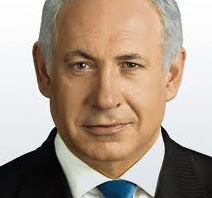
Nablus, in the northern West Bank of Occupied Palestine, lays claim to being the most beautiful city in the country. Built on two steep hills, or jebels, its main road runs on an east-west axis between the two. Alongside this thorougfare is the Old City, a maze of narrow streets, crowded markets and old stone houses. It is a magical place, reminiscent of the medieval bazaars and souks of Jerusalem's Old City.
Unlike Jerusalem, however, Nablus rarely sees a foreign tourist. Citing "security concerns", the government of Israel strongly discourages Westerners from visiting any part of the Palestinian territories. Those who do, discover a sense of safety and security which they do not find in, say, New York, Sydney or London. Indeed, experience of the famous Palestinian hospitality soon brings the realisation that the security warnings were nothing more than gross misinformation designed to instill fear of all things Palestinian. And, perhaps, to hide the evidence of the brutality of their military occupation from the eyes of the world.
In every Palestinian town and village one sees posters everywhere. Staring down are the faces of the shehada, the martyrs. Mostly young men, they are the victims of Israel's army of occupation. Some had taken up arms as part of the resistance. Some had been murdered in extra judicial assassinations. Some were just killed, as one crushes a cockroach, almost casually.
The most poignant, and the newest, was the poster of a sixteen year old boy, shot dead at the Huwarra checkpoint on 20th May, just before I arrived in Nablus. To get into or out of Nablus from the south everyone must pass through this checkpoint, suffering the indignity of queueing in long lines in an open-sided cattle pen, wondering if and when the gun-toting Israeli soldiers will let you through. On this day, like any other, this young Palestinian boy stood in the queue, waiting to be let through. He was listening to music through ear pods on his cell phone. Suddenly, spotting the wires from the ear pods trailing below his shirt, a young female soldier shouted "Bomb!" and shot the boy repeatedly with her automatic weapon. In the confusion that followed everyone was herded together and held under armed guard. The boy lay on the ground for two hours, bleeding to death while ambulances and medical personnel were refused access.
He was only sixteen years old. Like most young people he had his own cell phone. Like most young people he enjoyed listening to music. His misfortune was in being born Palestinian, in living under a brutal, callous military occupation. He became a shaheed. A martyr. A statistic.
The young female soldier who shot him will, no doubt, have her actions investigated by a military or civil court. She will, no doubt, be exonerated of any guilt. And so it goes on.


1 comment:
Unfortunately western media is not as open to Palastinian human rights violations as the approved countries .
Recent history has dictated since 1947/48 that the Palastinian is a tradable commodity to be traded as global powers want.
'The war on terror' has done incalculable damage to their plight by minimizing localised greivances, caused by international duplicity.
Post a Comment